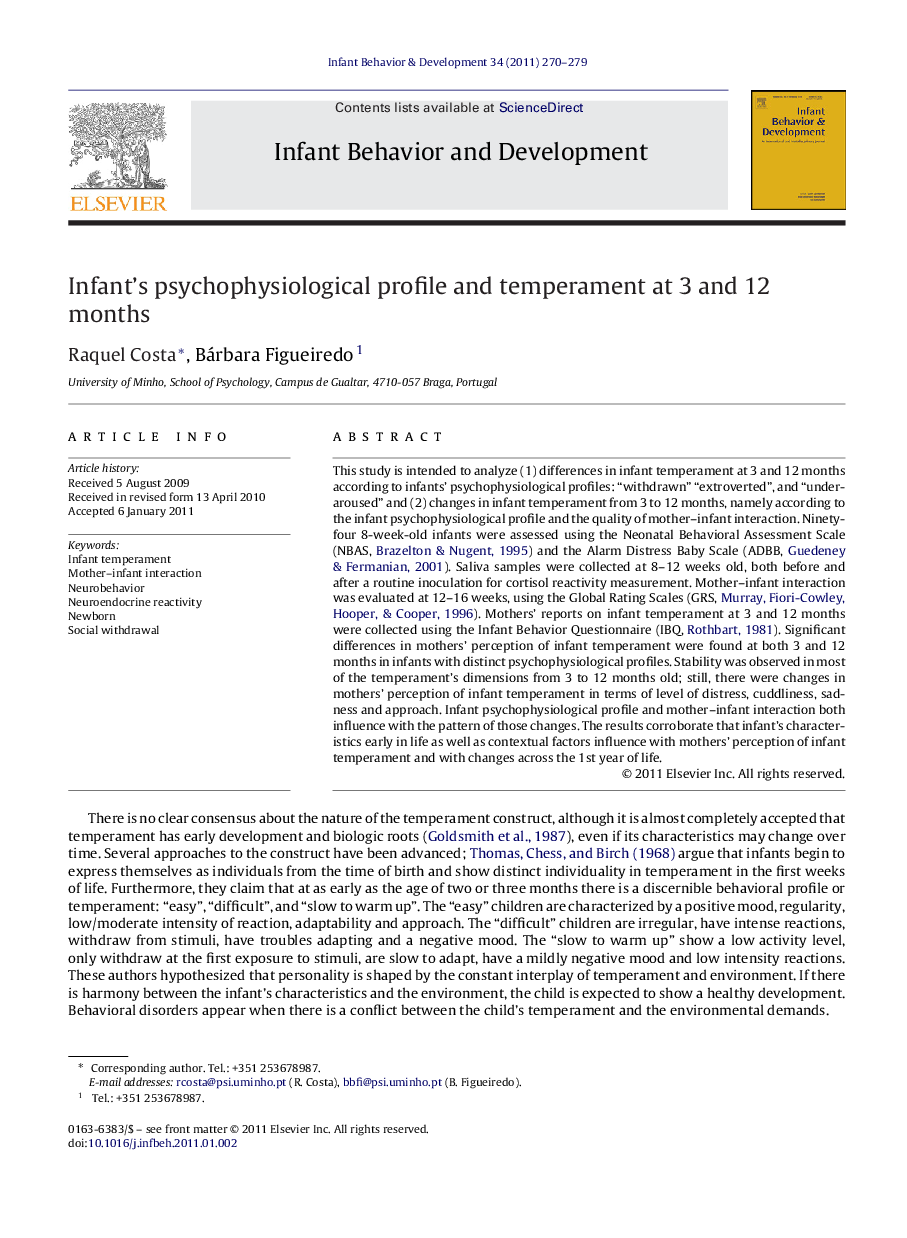| Article ID | Journal | Published Year | Pages | File Type |
|---|---|---|---|---|
| 917390 | Infant Behavior and Development | 2011 | 10 Pages |
This study is intended to analyze (1) differences in infant temperament at 3 and 12 months according to infants’ psychophysiological profiles: “withdrawn” “extroverted”, and “underaroused” and (2) changes in infant temperament from 3 to 12 months, namely according to the infant psychophysiological profile and the quality of mother–infant interaction. Ninety-four 8-week-old infants were assessed using the Neonatal Behavioral Assessment Scale (NBAS, Brazelton & Nugent, 1995) and the Alarm Distress Baby Scale (ADBB, Guedeney & Fermanian, 2001). Saliva samples were collected at 8–12 weeks old, both before and after a routine inoculation for cortisol reactivity measurement. Mother–infant interaction was evaluated at 12–16 weeks, using the Global Rating Scales (GRS, Murray, Fiori-Cowley, Hooper, & Cooper, 1996). Mothers’ reports on infant temperament at 3 and 12 months were collected using the Infant Behavior Questionnaire (IBQ, Rothbart, 1981). Significant differences in mothers’ perception of infant temperament were found at both 3 and 12 months in infants with distinct psychophysiological profiles. Stability was observed in most of the temperament's dimensions from 3 to 12 months old; still, there were changes in mothers’ perception of infant temperament in terms of level of distress, cuddliness, sadness and approach. Infant psychophysiological profile and mother–infant interaction both influence with the pattern of those changes. The results corroborate that infant's characteristics early in life as well as contextual factors influence with mothers’ perception of infant temperament and with changes across the 1st year of life.
Research highlights► Mothers’ perception of infants’ temperament depends on the infant psychophysiological profile. ► Some changes on infant temperament occur from 3 to 12 months old. ► The infant psychophysiological profile influence the pattern of those changes. ► The quality of mother–infant interaction also influences the pattern of those changes.
